100th Sukhoi Superjet 100 aircraft assembled in Russia
After the collapse aviation industry of the USSR, the SSJ100 aircraft is the only civilian aircraft in Russia, which was designed, put on the wing, certified and launched into mass production. As of July 1, 2015, the hundredth Sukhoi Superjet 100 aircraft is in the assembly.
Is 100 aircraft a lot or a little? Rolling out the first Sukhoi Superjet 100 took place in the 2007 year, the airline began to deliver aircraft to the airline from the 2011 year. For example: the first aircraft Yak-42 entered the airline "Aeroflot" at the end of the year 1980. By the year 2003 was built around 183 aircraft. In the period from 1970 to 1998, the 918 aircraft of the Tu-154 family was built. One of the most popular passenger aircraft assembled in the Soviet Union, the Tu-134 was produced from 1966 to 1984 year, in total, the 854 aircraft of all modifications were built (all figures are approximate, taken in open sources).
Many or few you decide, for me in the Far East this is the most optimal aircraft for flights around the region, why Aeroflot did not hand over the Aurora Sukhoi Superjet 100 airline to the Far East is not clear.
SSJ100 is a commercial aircraft, created using the latest technology, designed to carry passengers on both short-haul and medium-haul routes. The aircraft is fully engineered based on digital technology. In its production, technologies not previously used in Russia are used, such as a stackless assembly, automatic docking of airframe units and many others. The maximum cruise speed of the Sukhoi Superjet 100 is the Mach 0,81, which corresponds to approximately 860km per hour at altitudes from 8 850 meters or above FL 290 flight level. This means that SSJ100 can fly on the same echelon as the short-haul Boeing 737 and Airbus 320, thereby optimizing not only fuel costs, but also flight time from point A to point B.
Flight range for the version with increased range is - 4578 km. Operation of the aircraft is possible in a wide range of climatic conditions at temperatures ranging from minus 54 to plus 45 degrees Celsius: which is, as you probably already understood, the entire earth ball.
The holder of the type certificate for aircraft SSJ100 is the company "Sukhoi Civil Aircraft" - they are the developers. To achieve the competitive advantages of their aircraft, they invited companies from around the world, such as Thales, Safran, Messier Bugatti Dowty, Liebherr, to the project ... After all, this is a global trend - international integration in the aviation industry. It is enough to remember the Dreamliner, A380 ...
The production of the aircraft, its final assembly, is carried out by the Komsomolsk-on-Amur branch of CJSC “Sukhoi Civil Aircraft” with the direct participation of other plants in Russia, where the Sukhoi Superjet 100 components are manufactured. Currently, the plant’s production capacity allows it to produce up to 50 aircraft per year. The branch takes full advantage of lean technology. Their use is aimed at improving production efficiency and its planning. Lean technologies are based on modern techniques, optimization of the equipment procurement process, minimization of labor and time costs.
At the end of 2013, a multimedia training system was commissioned at the Komsomolsk-on-Amur branch of JSC GSS, which allows us to develop the production skills of testing SSJ100 aircraft systems. The simulator “Testing of SSJ100 aircraft systems” reduces the time for training employees to work at a specific site and forms the ability to test the performance of the aircraft systems before transferring it to the next stage of assembly.
All models of the Sukhoi Superjet 100 family are equipped with two PowerJet SaM146 turbofan engines. The SaM146 engine was specifically designed for the Sukhoi Superjet 100 type aircraft. PowerJet is a joint venture of Snecma (Safran group, France) and NPO Saturn (Russia) with equal shares. The SaM146 engine combines the successful experience of using CFM56 using modern technologies and reducing the number of components by 20%, which significantly reduces the cost of operation and maintenance while achieving high performance and reliability.
If anyone does not know or forgot, then I remind you that CFM56 engines are among the most common in the world. Their story begins with the use of aircraft Boeing 737. Boeing 737 airplanes for more than 25 have for years been equipped with CFM56 engines only. CFM56 engines are also installed on the Airbus A320 and Airbus A340-200 and -300 and other civilian and military aircraft models.
Snecma Safran Groupe (France) is responsible for the production of: high pressure compressor, combustion chamber, high pressure turbine, drive box, digital engine management system, power plant integration, flight and ground test support. NPO Saturn (Russia) is responsible for the production of: a fan, a booster, a low-pressure turbine, the final assembly of the engine, and engine acceptance tests.
In one of the commercial flights during the landing approach SSJ100 collided with a goose that hit the engine. A running engine spun the bird and knocked it out through the cold circuit, with a few damaged fan blades. However, the pilots landed the plane without any problems.
The SSJ100 aircraft is equipped with a three-bearing chassis. Managed front and main supports in flight are retracted into niches and are fully closed with wings. To ensure high weight perfection, the main landing gear supports are made according to the two-sub struction scheme.
The design of the chassis, developed by CJSC Sukhoi Civil Aircraft together with Messier Bugatti Dowty, is completely identical both on the basic version and on the SSJ100 extended range version.
And here is the most important thing in the modern aircraft, its “brain”, namely, the onboard computer that controls all the systems. High flight safety is achieved due to the optimal piloting of the aircraft in automatic mode and the security of the flight control system against random errors. The remote control system is based on three dual-channel upper level calculators (PFCU - Primary Flight Computer Unit), complementary dual-channel lower level calculators (ACE - Actuator Control Electronics). PFCUs process command signals from the cockpit, autopilot and avionics, and optimize the flight performance of the aircraft in all flight modes. The level of functional saturation, implemented in PFCU, was developed taking into account the experience of the Sukhoy Design Bureau on the development of a SDE with automatic limitation of flight limits and operational parameters with manual and automatic control.
Thus, the highest level of safety is ensured at all stages of the flight, not only due to the high reliability of the aircraft systems, but also due to the unique functionality of protection against errors associated with the "human factor". SSJ100 will be the first regional aircraft with an SDU of this level. In the event of a series of serious failures on board, the CDS will switch to a backup control loop, providing flight characteristics at the level of a manual (conventional) aircraft.
By the way, in the cold for - 45 degrees Celsius, the plane spent the night on the Yakut airport platform, to launch it, it was enough to warm up the compartment with the main computer to a temperature - 30 degrees. The entire aircraft is ready for launching and launching the APU. Further, the cabin and cabin warming up, until the passengers landed and the engines were started by the crew of the aircraft, was carried out with the help of a standard ACR with air extraction from the APU.
And now let's get on board the aircraft, Sukhoi Civil Aircraft CJSC is positioning the Sukhoi Superjet 100 as an aircraft in whose cabin passengers feel as comfortable as in the main aircraft cabin. Salon presented on the scheme 3 + 2. Passengers have easy and convenient access to the shelves, in which suitcases on wheels, approved by IATA standards as hand luggage (maximum allowable sizes 24 × 16 × 10) fit easily. Bulky luggage racks allow passengers to also freely place any outerwear regardless of the season or region. The photo shows the Sukhoi Superjet 100 for Gazprom Avia with the tail number RA-89050. At that time, the liner was preparing for delivery, so the salon was dragged in cellophane.
In the cabin for this customer are three toilet rooms. The toilet in the rear service area is adapted for passengers with reduced mobility. Look how big he is, by the way the Mexican company Interjet that successfully exploits the Sukhoi Superjet 100 has made it an individual toilet for women.
Here, for comparison, the standard toilet room, which is located in front of the aircraft Sukhoi Superjet 100.
The management of various passenger cabin systems for the flight attendant, as you can see, you can adjust the interior lighting, the temperature, there is also an alarm system of smoke detectors in the toilet rooms, so that gentlemen smokers in an airplane can cause smoking.
Sukhoi Superjet 100 for Gazprom Avia Airlines is leaving the hangar, by the way, this board has already been transferred to the airline and now it can already be seen on the country's air routes. We will also leave the hangar and move to the platform, where we will continue to inspect the liner on the example of one of the experienced aircraft.
Before you is an experimental aircraft Sukhoi Superjet 100 with a tail number RA-97005, here it is called “Pyaterochka”.
In 2013, in Iceland, an aircraft incident occurred with this board. At the final stage of certification tests for the expansion of operating conditions - automatic landing (certification program for the category ICAO CAT III A) with side wind when landing with imitation of a single engine failure, the aircraft landed on the runway with the landing gear removed.
Then many experts from aviation buried him, they said, and the funny thing is still saying that the board was lost. But the plane was repaired by the GSS team and made a flight to its home base in Zhukovsky. Now he, as before, is involved in the trials.
The plane has long been involved in the flight test program, where it just was not, so it is not surprising that the seats in the cabin do not look as new as on board the Gazprom Avia, which we have just visited. But this does not prevent us from estimating the increased living space for each passenger: a large step of seats in the basic configuration of the SSJ100 aircraft (32 inch / 81,28 cm) makes even high passengers feel comfortable on board. Pay attention to what the large portholes will be a pleasure to photograph the earthly landscape and the air element.
Well, now by my own example (and I myself am not even very small), you see how much space, to be honest, not many long-haul aircraft can boast such a step of the seats.
Many people collided, went to the toilet room at the tail of the plane, and then they began to feed the passengers and then they had to wait until the passage was released. On the Sukhoi Superjet 100, you can forget about this, the wide central aisle in the cabin of the aircraft ensures that you fly away with a trolley for drinks or catering.
Now we’ll go into the cockpit, the SSJ100 is conveniently controlled by using modern intuitive cockpit with the latest developments in the field of Thales avionics and a fly-by-wire fully digital electro-remote control system. In short, by moving the control levers in the cockpit using sensors installed on them, they are converted into digital electrical signals that are transmitted through the electrical wiring to the computer of the control system. At the same time, the signals from the angular velocity sensors, overloads, attack and slip angles, the transmitter of the air signal system and a number of other devices also arrive there. The calculator in accordance with the control algorithms embedded in it converts these signals into control electrical signals of control actuators. At the same time, it can also perform the functions of a limiter of limiting flight modes: to avoid exceeding the established limits on overload, angle of attack and other parameters. Thus, the probability of the aircraft getting into unwanted flight modes is significantly reduced: stalling, spin, etc. (photo provided by JSC GSS).
The design of the “Dark and Quiet” cabin, as well as its ergonomics, equipment with wide LCD displays provide the crew with unmatched situational awareness, productivity and operational efficiency. Meteorological radar with forecasting the change of wind direction also costs (photo provided by GSS).
An integrated modular avionics (IMA) architecture through an onboard duplex data exchange network (AFDX) improves reliability and optimizes maintenance costs while significantly reducing the required space, weight, and power consumption. Airborne Addressing and Data Transmission System (ACARS). Reduced vertical separation minimum (RVSM). Optional dual electronic flight documentation system (Electronic Flight Bags). Airborne collision avoidance and proximity warning systems (T2CAS). The instrument-based radionavigation system for providing an instrument landing approach (ILS) of CAT lllA category.
The designers preferred the side control stick of the aircraft to the traditional steering wheel, with the result that the Sukhoi Superjet 100 became the first Russian serial civilian passenger plane with side sticks. Sidestick (English Side-stick - side control knob) is the body of manual control of the aircraft, allowing you to change the roll and pitch of the aircraft. Unlike the traditional control knob, installed in the center of the cockpit between the legs of the pilot, the side stick is placed to the right of the pilot (if it is a military aircraft), or on the sides of the cabin (in the passenger). Thus, the side stick of the pilot sitting to the left (the aircraft commander) is located to the left of his seat, and the side stick of the pilot sitting to the right (co-pilot) is located to the right of his seat. The control knobs in a passenger plane are not directly connected to the control planes. On the SSJ100 aircraft, the side posts of the FAC and co-pilot are independent. Any movement of the side-stick is processed by the on-board computers and the information is transmitted by wire to the hydraulic drives that come into action and make the necessary movements of the steering surfaces. Both sidesticks are specifically designed for left and right hands so that pilots do not experience discomfort. When both knobs are rejected (if both are on) the signal is summed. Sidestick equipped with a button to disable the autopilot and the inclusion of priority between the two handles.
The side control knob is used in many modern fighters, such as the F-16, Mitsubishi F-2, Dassault Rafale, F-22 Raptor, as well as on civil aircraft, such as the Airbus A320 (became the first passenger plane equipped with side sticks), Airbus A380.
But next is the Sukhoi Superjet 100LR with the tail number RA-97006. At the beginning of 2015, this experimental board was painted and the corporate symbolism of Sukhoi Civil Aircraft CJSC was applied to it.
This is where my story about the Russian Sukhoi Superjet 100 aircraft ends. I hope you liked the plane as well as me. Aircraft, decent, new, modern and safe. For complete happiness, I just had to make a flight on it (I haven’t flown yet) and visit a factory in the city of youth on the banks of the Amur River. It will be interesting to read your impressions, reviews and opinions about this aircraft, write in the comments.
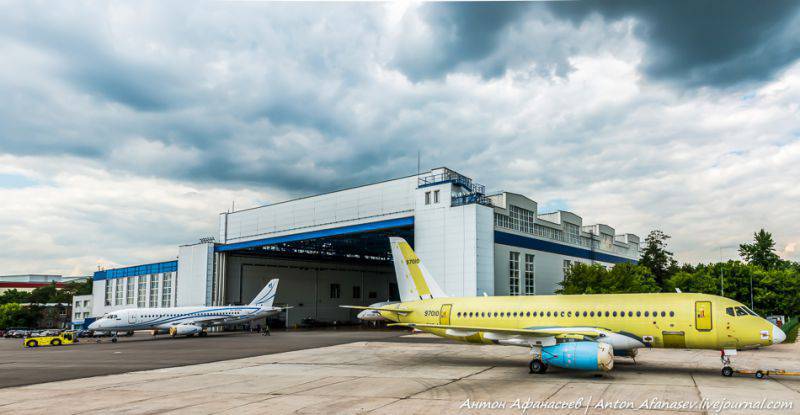
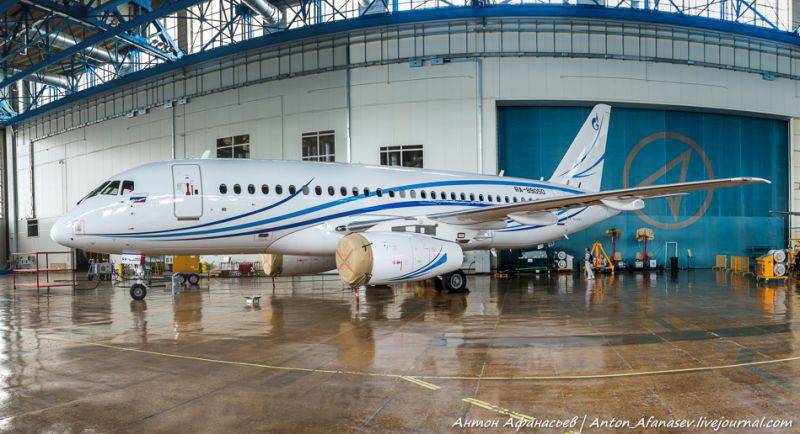
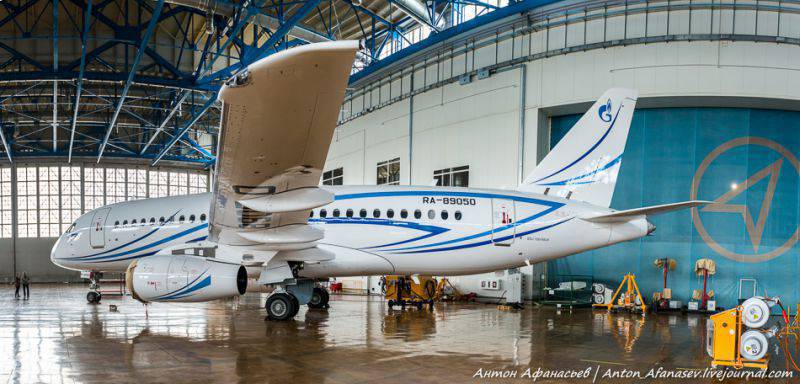
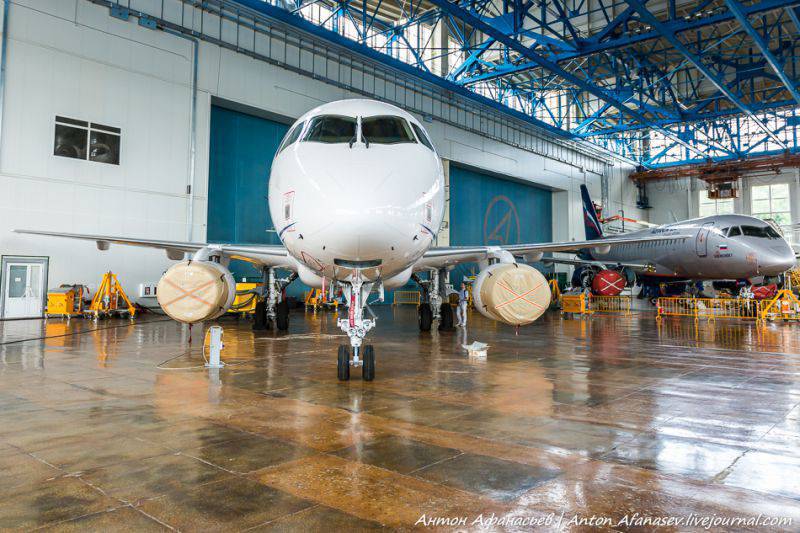
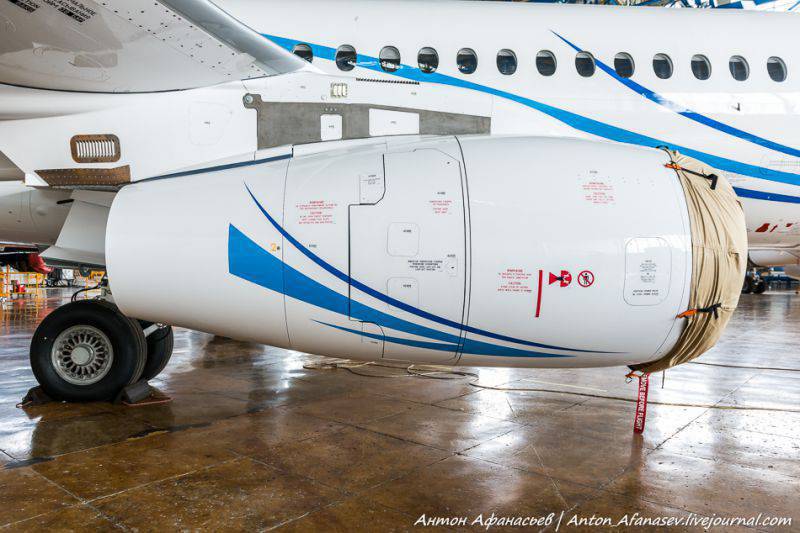
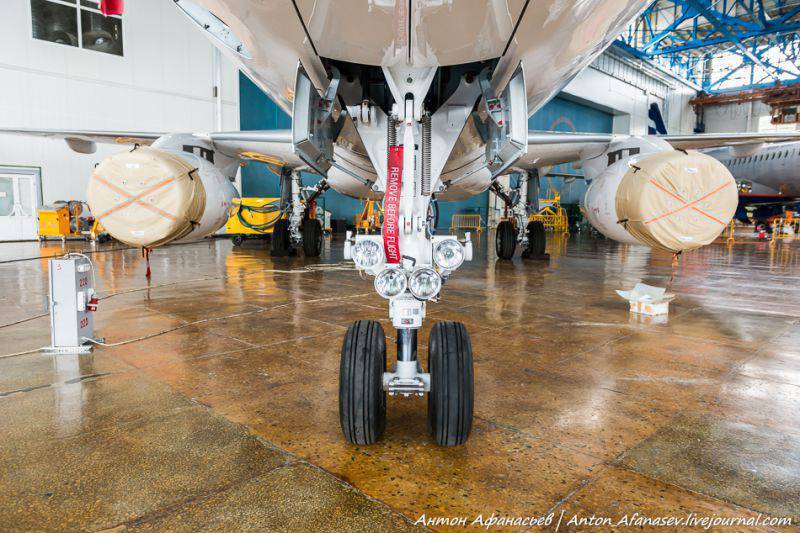
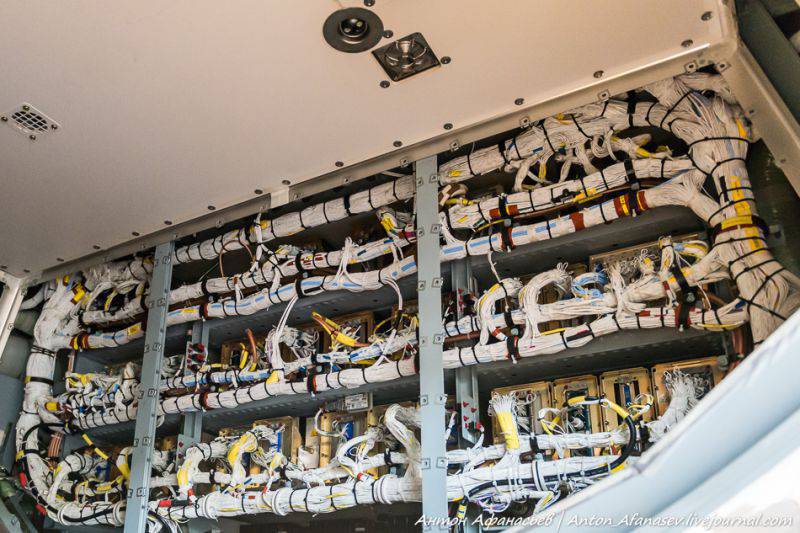
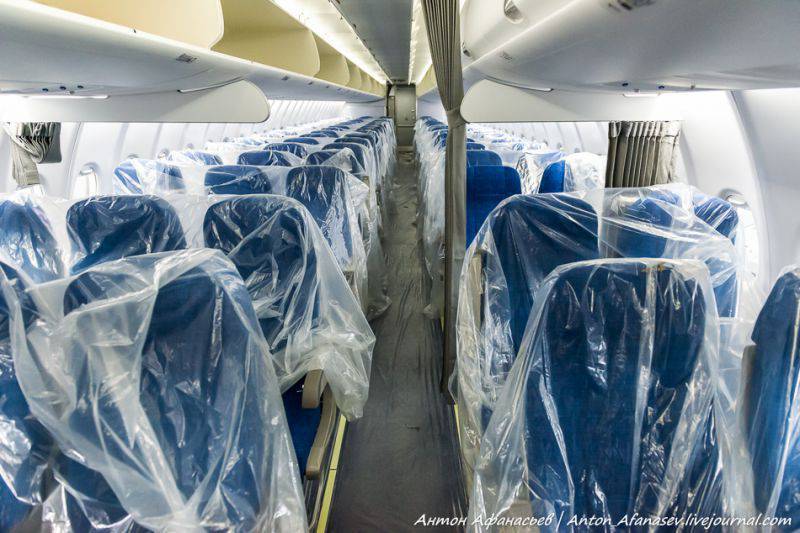
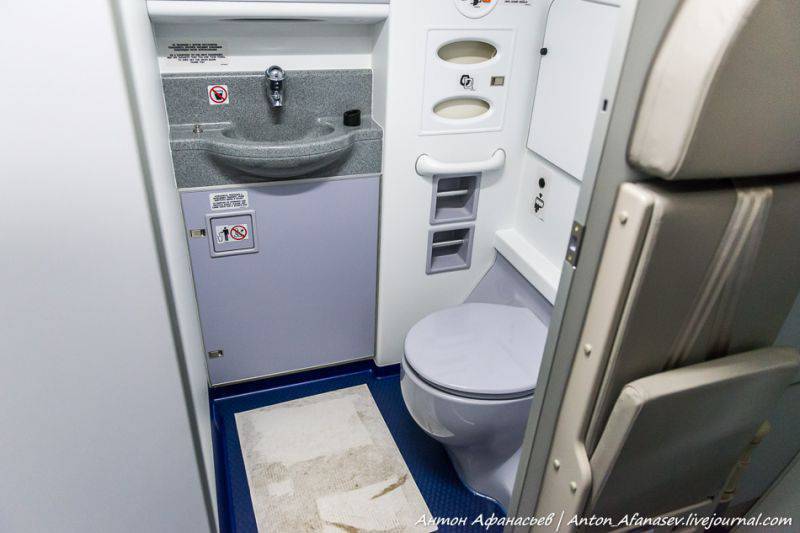
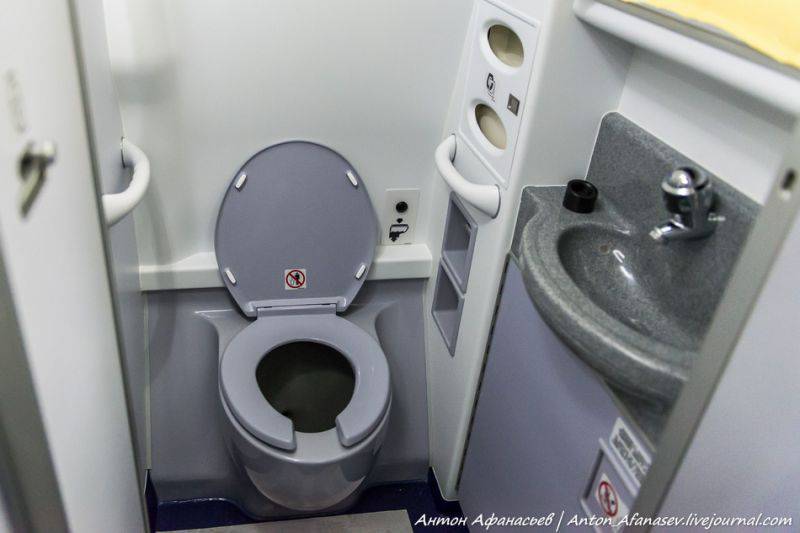
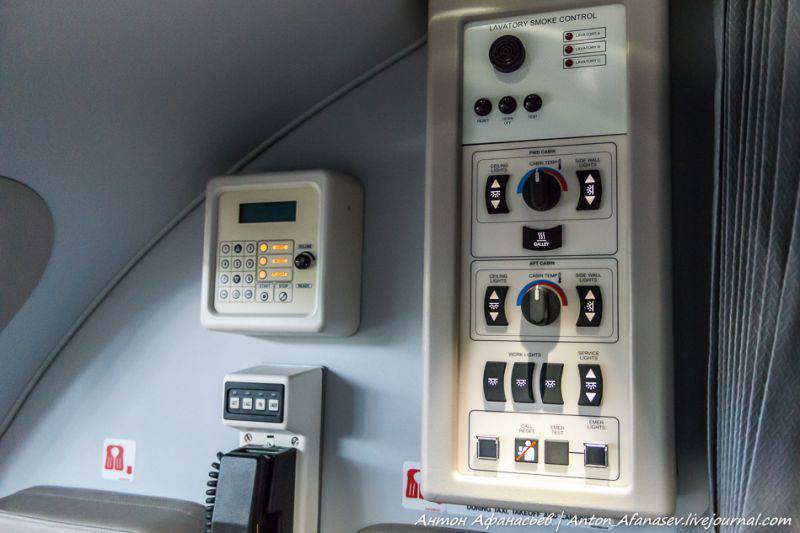
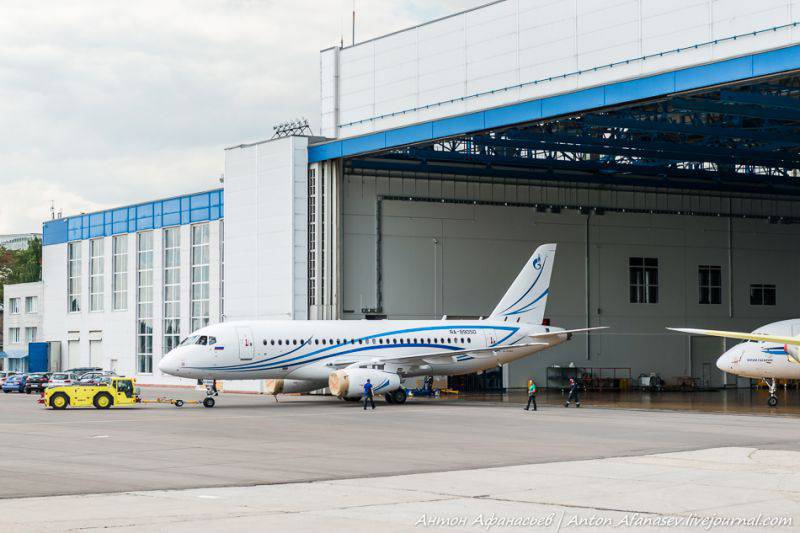
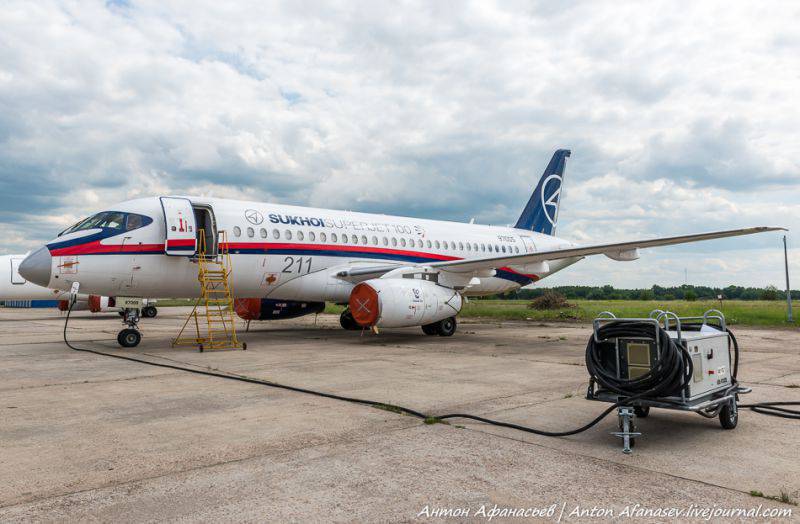
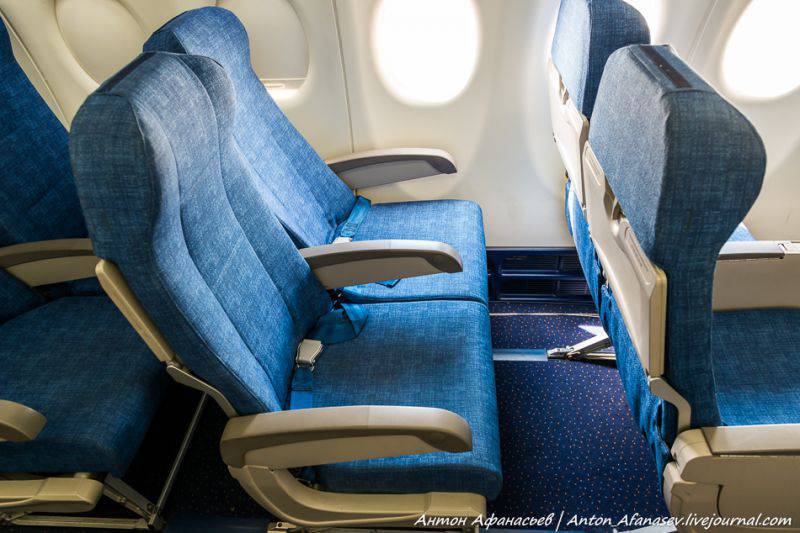
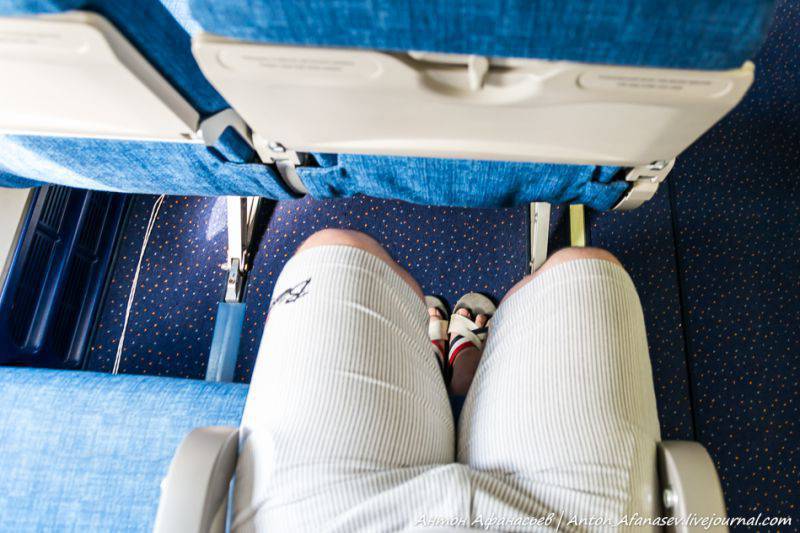
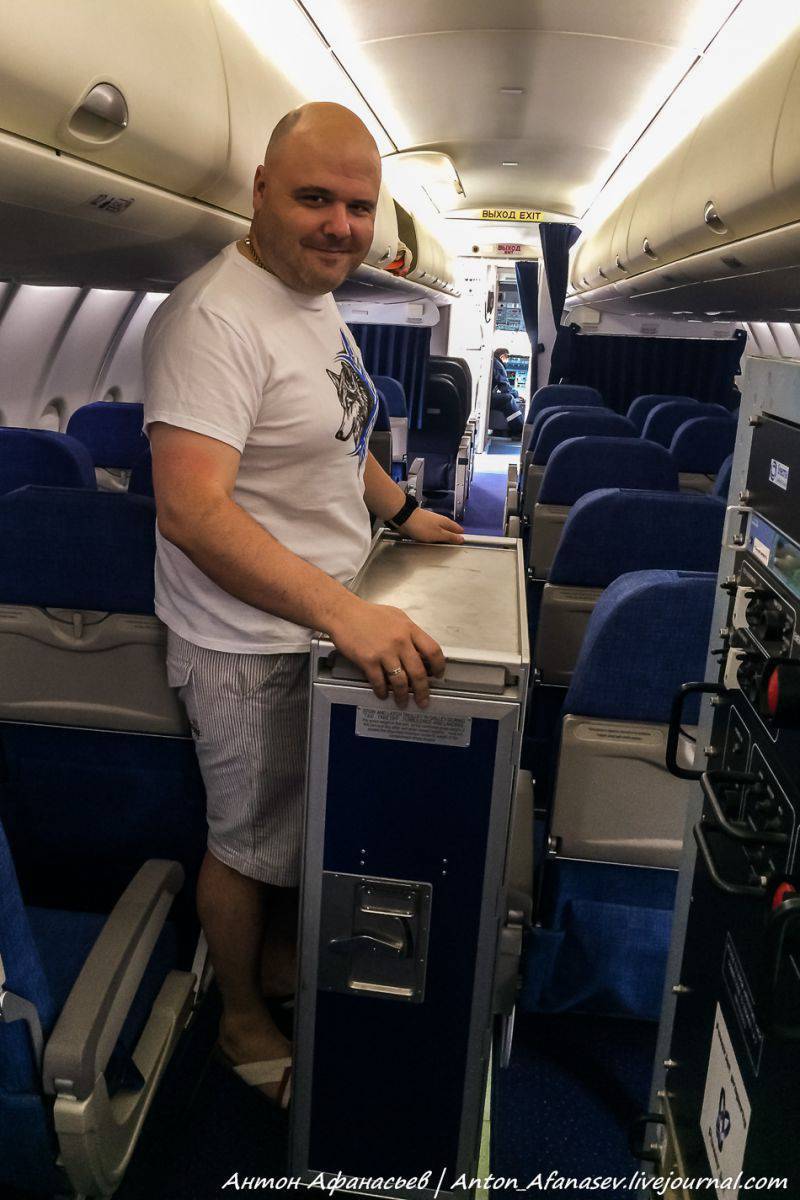
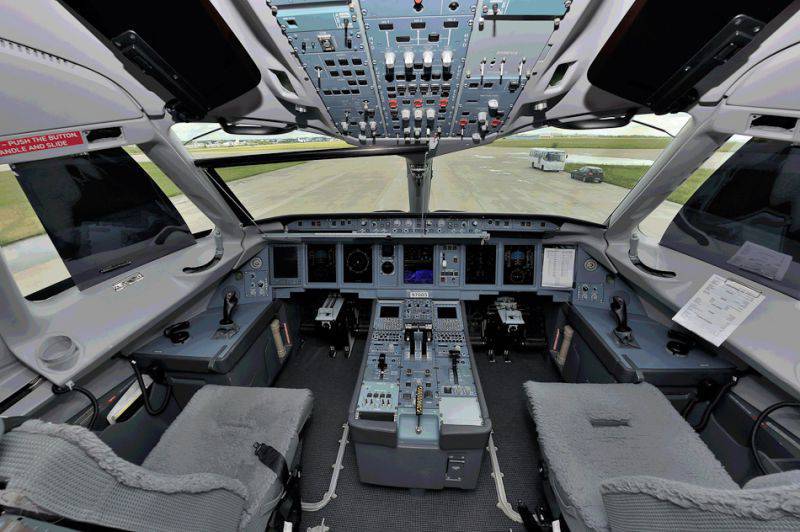
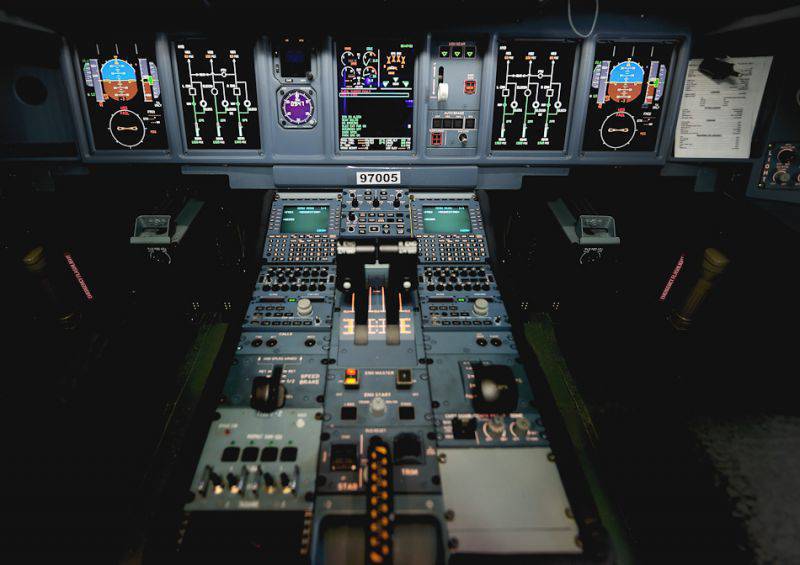
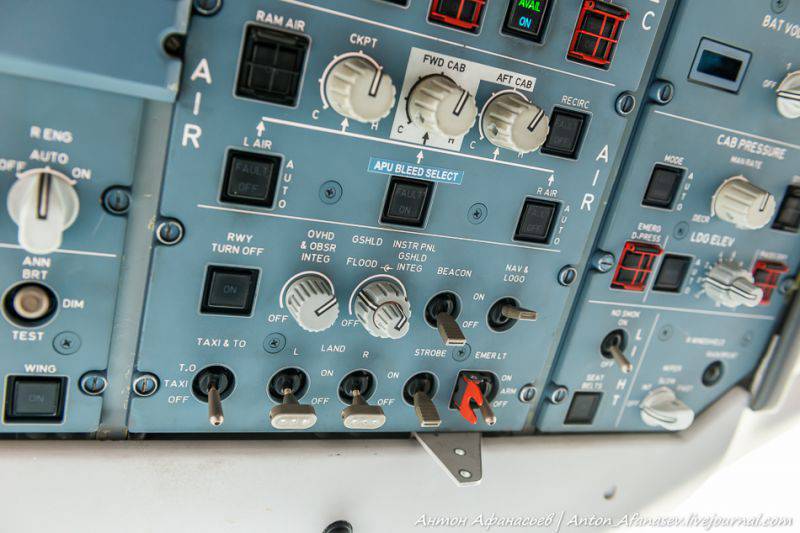
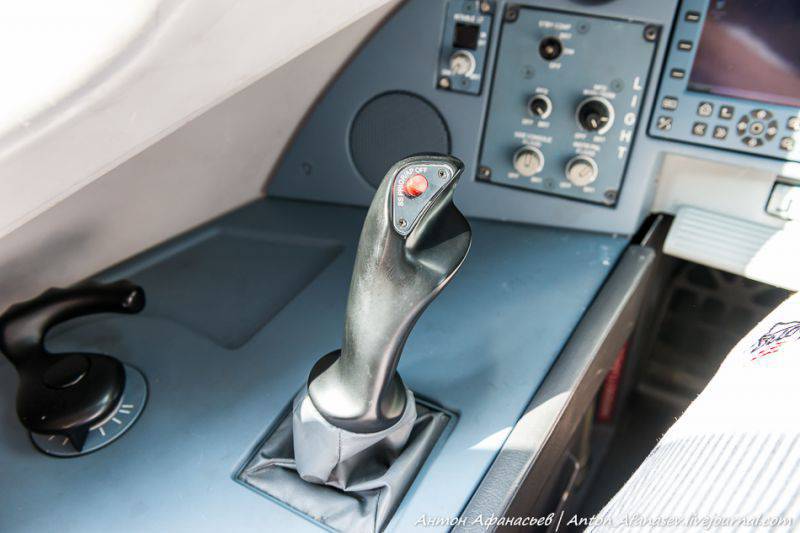
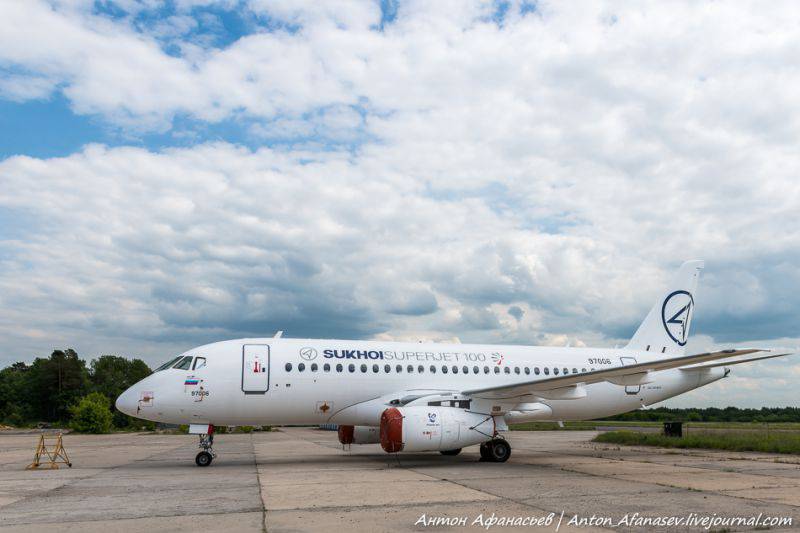
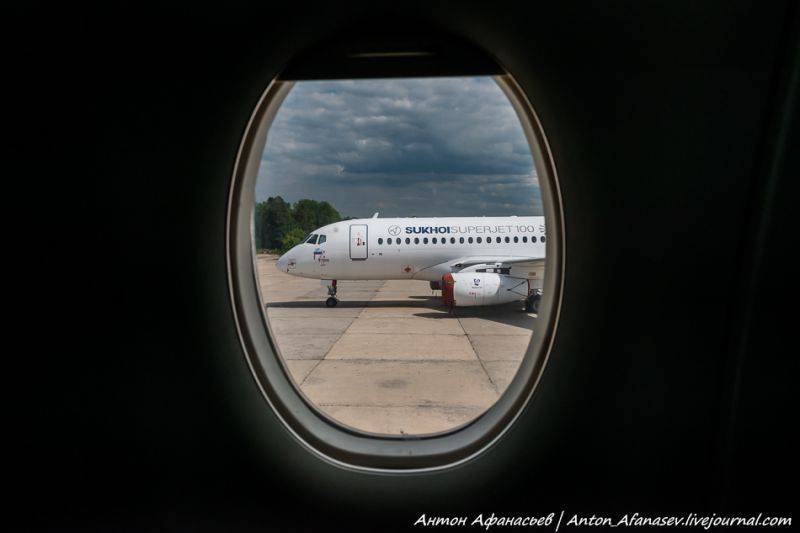
Information